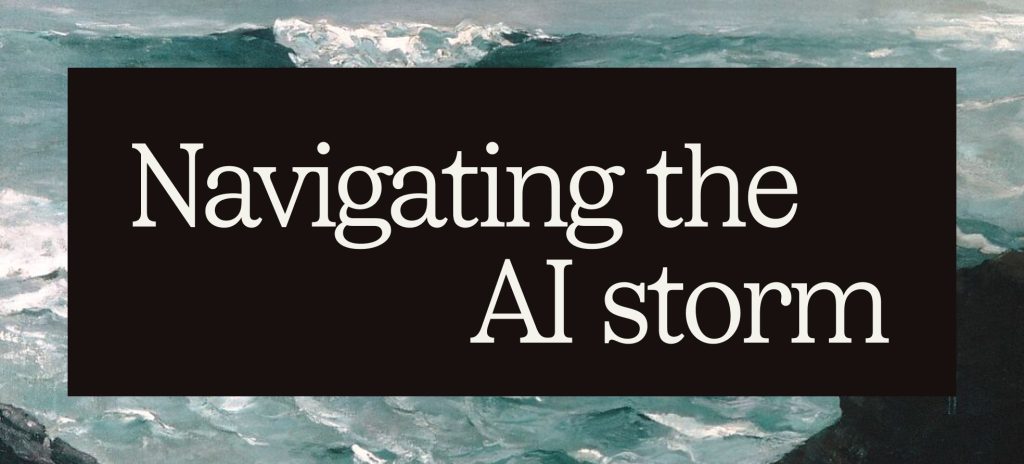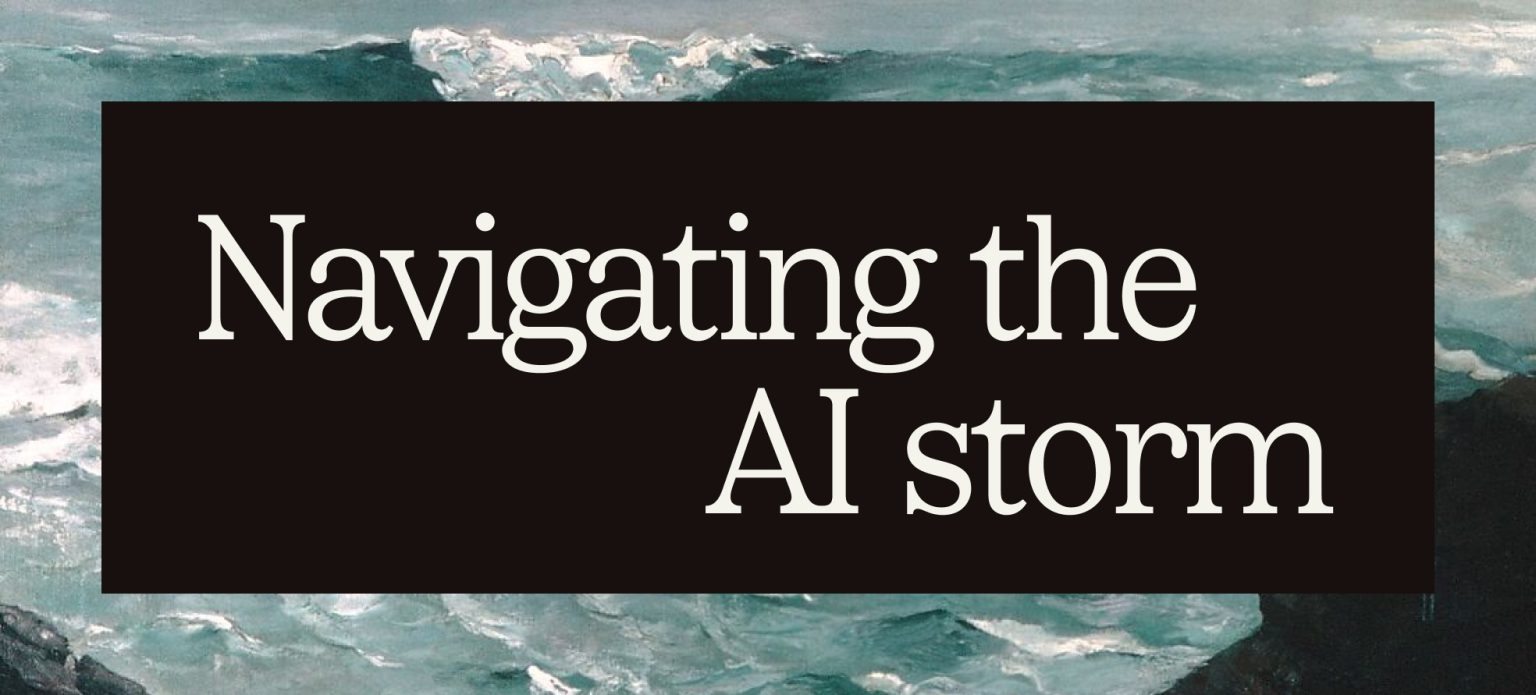
Artificial Intelligence (AI) has evolved from a futuristic concept into an unstoppable force reshaping every aspect of modern life and business. From automating tasks to making strategic decisions, AI is accelerating innovation across industries. Yet, this rapid advancement also brings turbulence—ethical risks, workforce disruptions, and technical complexities. Like a storm, AI’s power can either propel us forward or leave us overwhelmed. The key lies in learning how to harness its potential responsibly and effectively.
The AI Storm: Opportunity Meets Uncertainty –
AI represents both tremendous opportunity and deep uncertainty. Its ability to analyze data, detect patterns, and generate content is revolutionizing sectors like healthcare, finance, and marketing. However, the same speed and scale that make AI transformative also make it unpredictable. Ethical challenges such as data privacy violations, algorithmic bias, and misinformation are rising. Additionally, many organizations struggle to keep pace with evolving AI technologies, often implementing solutions without a clear strategy. The storm is here—and preparation determines whether you thrive or falter.
Start With Strategy, Not Shiny Tools –
One of the most common pitfalls in AI adoption is chasing trends rather than purpose. Many businesses invest in AI simply because competitors are doing so, resulting in fragmented efforts and wasted resources. The smarter approach is to begin with a clear strategy. Organizations should define what problems AI will solve and how success will be measured. Aligning AI initiatives with business goals—such as improving customer experience, streamlining operations, or enhancing decision-making—ensures that technology serves strategy, not the other way around. Purpose-driven AI adoption leads to sustainable impact.
Building a Foundation of Responsible AI –
As AI becomes more integrated into everyday operations, responsible implementation is crucial. Responsible AI involves ensuring fairness, transparency, and accountability in every stage of the system’s lifecycle. Organizations must understand where their data originates, identify potential biases, and maintain clear documentation of how models make decisions. Human oversight remains essential, especially in high-stakes scenarios involving finance, hiring, or healthcare. Moreover, establishing AI governance frameworks helps manage compliance and mitigate risks. In essence, responsible AI safeguards both reputation and trust while enabling innovation.
Empowering People, Not Replacing Them –
Contrary to popular fear, AI is not here to replace humans—it’s here to empower them. The most successful organizations use AI to augment human intelligence, not eliminate it. For example, AI can process large volumes of data quickly, but humans bring creativity, empathy, and contextual understanding that machines lack. This collaboration between human intuition and machine efficiency leads to smarter decisions and higher productivity. To make this possible, companies should invest in AI literacy and continuous learning programs that help employees adapt and thrive alongside intelligent systems.
Staying Agile Amid Rapid Change –
The pace of AI innovation demands agility. What is considered cutting-edge today may become obsolete tomorrow. To stay competitive, businesses must adopt a flexible approach—experimenting with pilot projects, gathering feedback, and iterating quickly. Regularly retraining AI models and updating systems ensures relevance and accuracy. Collaboration between data scientists, developers, and business teams is also vital, as it bridges technical expertise with practical business understanding. Agility transforms the AI storm into an opportunity for growth rather than a threat of disruption.
Balancing Innovation with Human Values –
In the race to innovate, it’s easy to lose sight of the human impact of AI. Technology should serve humanity, not overshadow it. Every AI-driven decision must align with ethical principles and social responsibility. Businesses should ask whether their AI solutions promote fairness, inclusivity, and transparency. Does the technology enhance human connection or erode it? Does it make society safer and more equitable? By embedding human values into AI strategy, organizations ensure that progress remains purposeful and sustainable.
Conclusion –
AI is undeniably a powerful force—one that can create immense value when guided wisely. Those who ignore it risk falling behind, while those who chase it blindly risk being overwhelmed. The true winners will be the ones who navigate the AI storm with strategy, responsibility, and vision. By combining human insight with technological innovation, organizations can turn chaos into clarity and disruption into opportunity. Ultimately, harnessing AI isn’t about controlling the storm—it’s about learning to sail through it with confidence, purpose, and balance.


